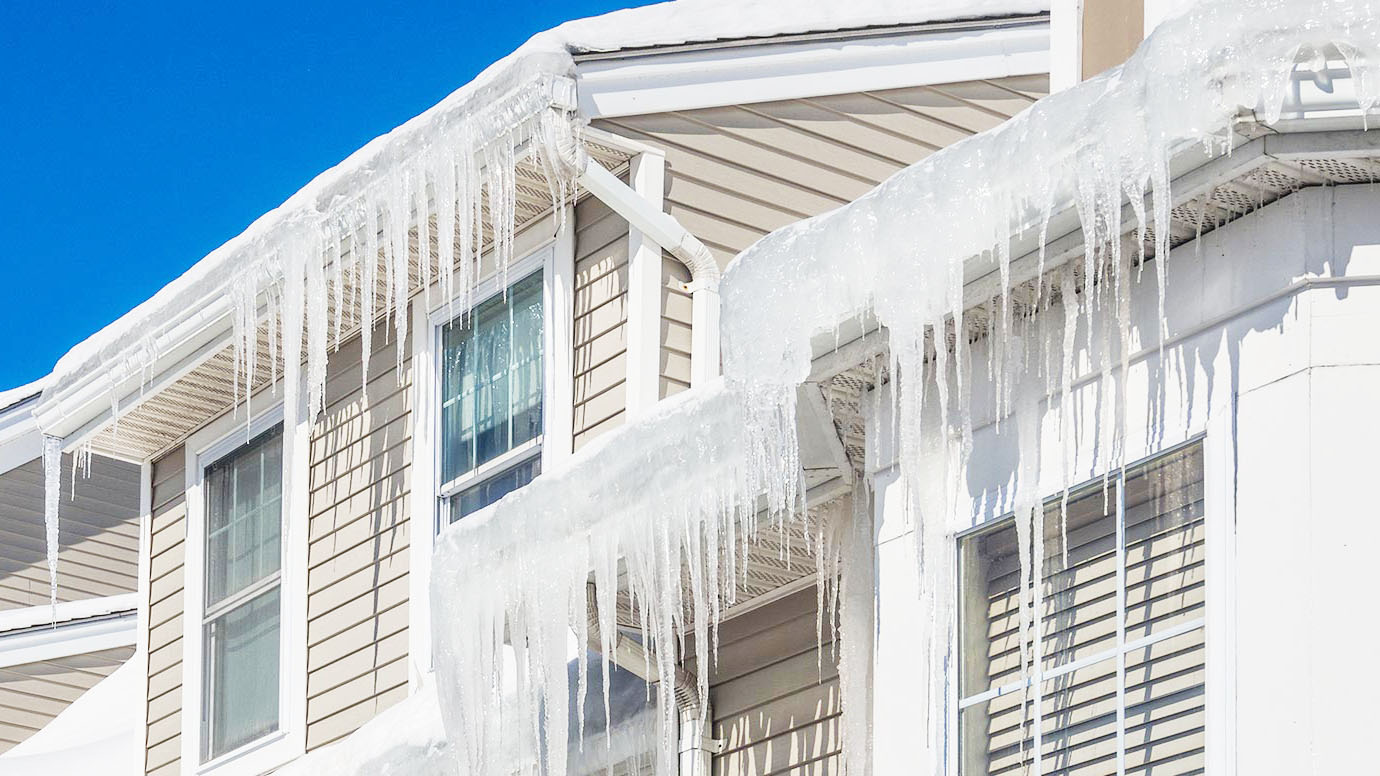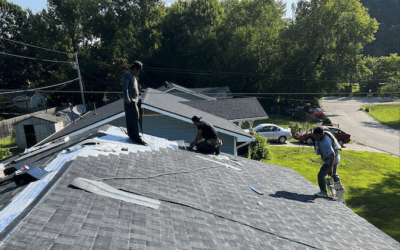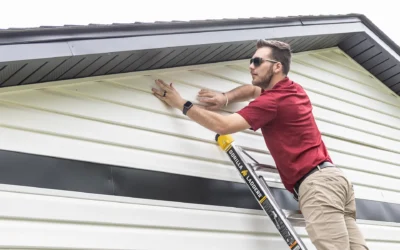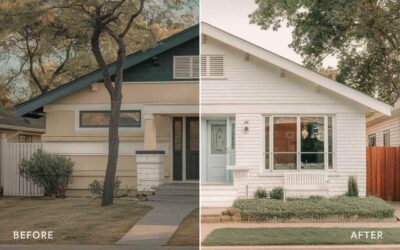Learn how to prevent ice dams on residential roofs with this homeowner’s guide.
Louisville, Kentucky, is known for its unpredictable winter weather, where freezing temperatures and occasional snowfall can create a picturesque winter wonderland.
However, the beauty comes at a cost, as you may face the challenge of dealing with ice dams on your roof.
In this blog, we’ll explore what ice dams are, why they pose a threat, and most importantly, how you can prevent them to safeguard your home during the cold months.
Understanding Ice Dams:
Ice dams are ridges of ice that form along the edges of the roof, trapping melting snow and preventing it from draining properly.
As the snow on the roof melts, it can refreeze at the eaves and gutters, creating a dam.
This ice accumulation prevents melted water from flowing off the roof, causing it to back up under the shingles and potentially infiltrate the interior of your home.
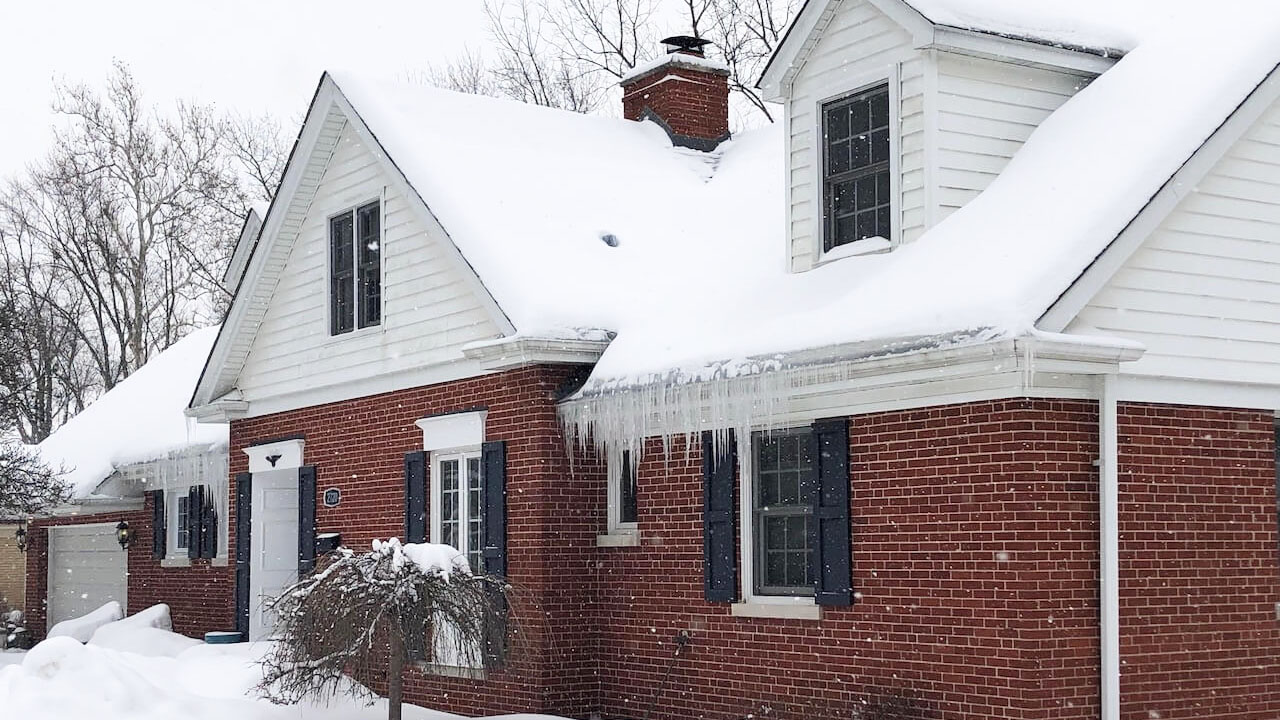
Ice dam on a residential roof in Louisville, KY.
Why are Ice Dams a Problem?
The consequences of ice dams can be severe.
The trapped water can seep into your home. This can cause damage to ceilings, walls, insulation, and even the structure of your house.
Additionally, the added weight of ice dams can strain your roof, leading to potential structural issues and compromising its integrity.
To avoid the headaches and expenses associated with repairing water damage and roof issues, it’s crucial to take proactive measures for ice dam prevention.
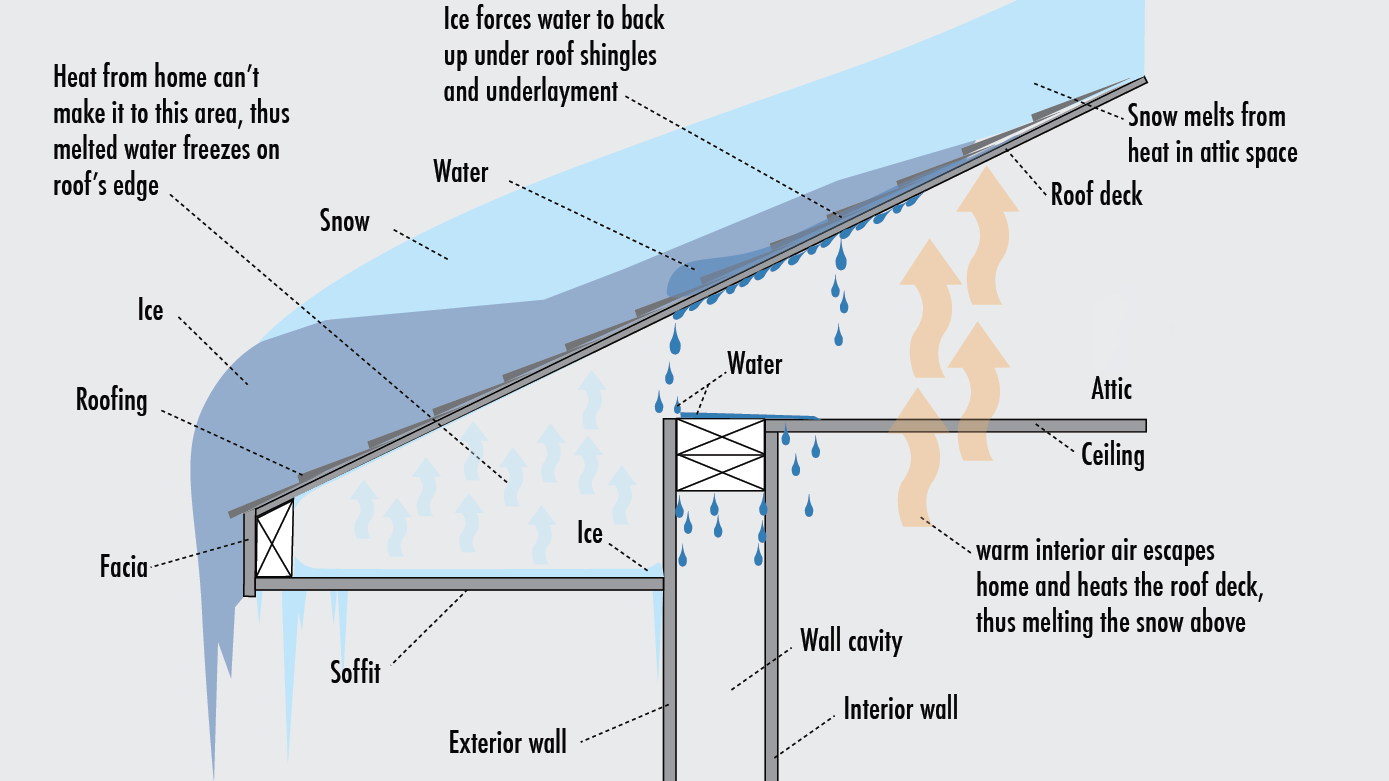
Diagram of an ice dam on a typical residential roof.
How to Prevent Ice Dams on Residential Roofs:
- Proper Insulation: Ensure that your attic is adequately insulated. This helps maintain a consistent temperature on the roof, minimizing the risk of snow melting and refreezing at the eaves. Consider consulting with professionals to assess your insulation needs and make any necessary improvements.
- Ventilation: Proper ventilation is key to preventing ice dams. Ensure that your attic is well-ventilated to maintain a consistent temperature. Ridge vents, soffit vents, and attic fans can help regulate airflow. They can prevent warm air from accumulating and melting the snow on the roof.
- Sealing Gaps and Leaks: Inspect your roof for any gaps, leaks, or openings that may allow warm air to escape into the attic. Seal these areas with weatherstripping, caulk, or insulation to maintain a more even temperature and prevent the conditions conducive to ice dam formation.
- Snow Removal: Removing snow is a great way to prevent ice dams on residential roofs. Safely remove accumulated snow from your roof after a significant snowfall. Use a roof rake to carefully clear excess snow, particularly near the eaves. This reduces the amount of snow available to melt.
- Gutter Maintenance: Keep gutters and downspouts clear of debris to allow proper drainage. Clogged gutters contribute to the formation of ice dams, as melting snow has nowhere to go. Regularly clean gutters and downspouts, especially before winter sets in.
- Professional Inspection: Schedule regular inspections with a qualified roofing professional to assess the condition of your roof and identify any potential issues. They can provide tailored advice based on your specific roofing system and weather conditions in Louisville.
- Ice Dam Removal: When ice dams do form, it’s essential to address them promptly. Contact professional ice dam removal services. They use safe and effective techniques to eliminate the existing ice dams, preventing further damage to your roof and home.
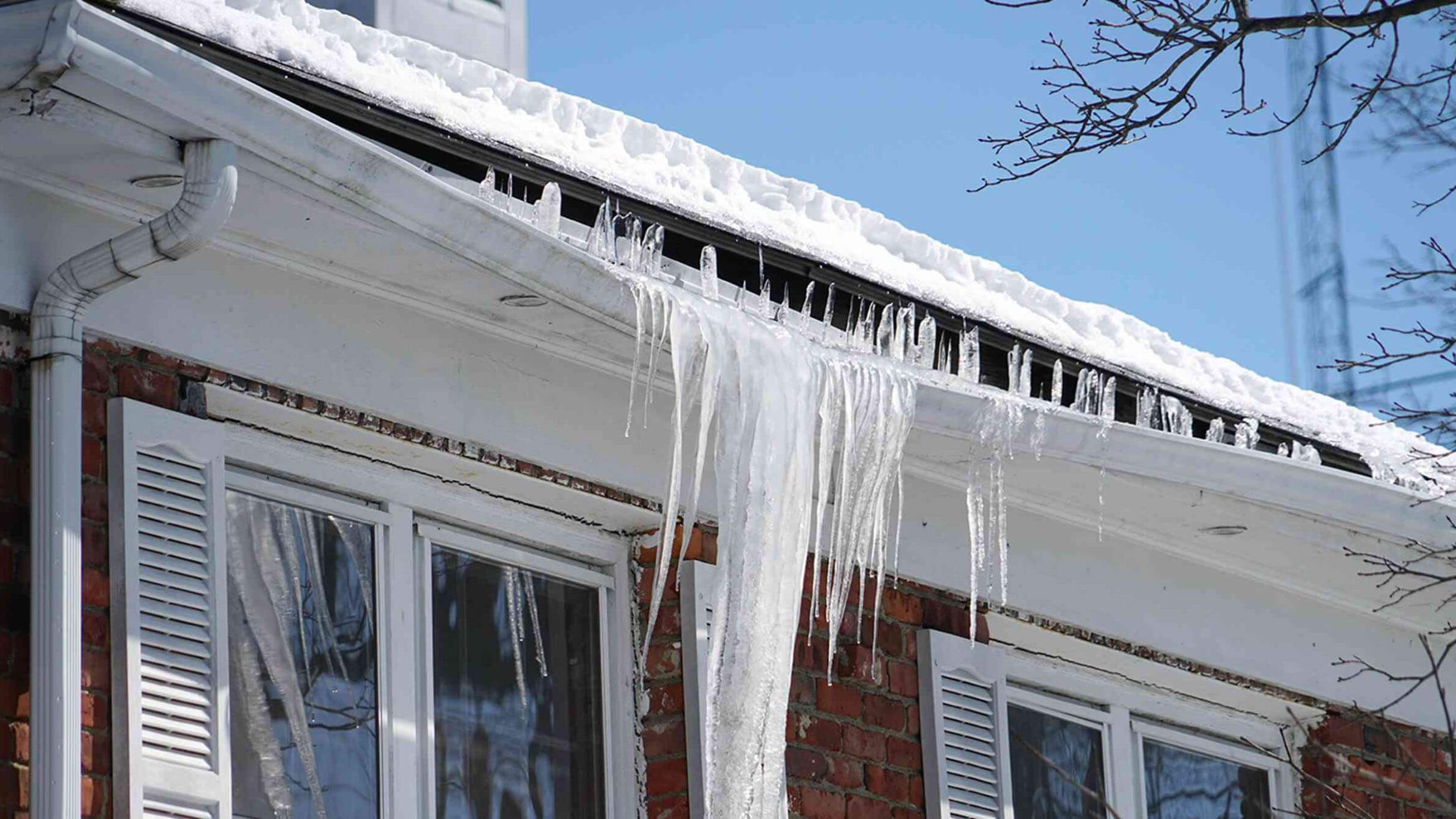
An ice dam will damage a roof and gutters.
Contact Origin Construction for Reliable Roofing Solutions!
Origin Construction has a team of experts who understand the unique challenges posed by Louisville’s winter weather. We will provide tailored advice on how to prevent ice dams on residential roofs, and carry out the job expertly and efficiently. So call today to schedule your FREE consultation and inspection!
